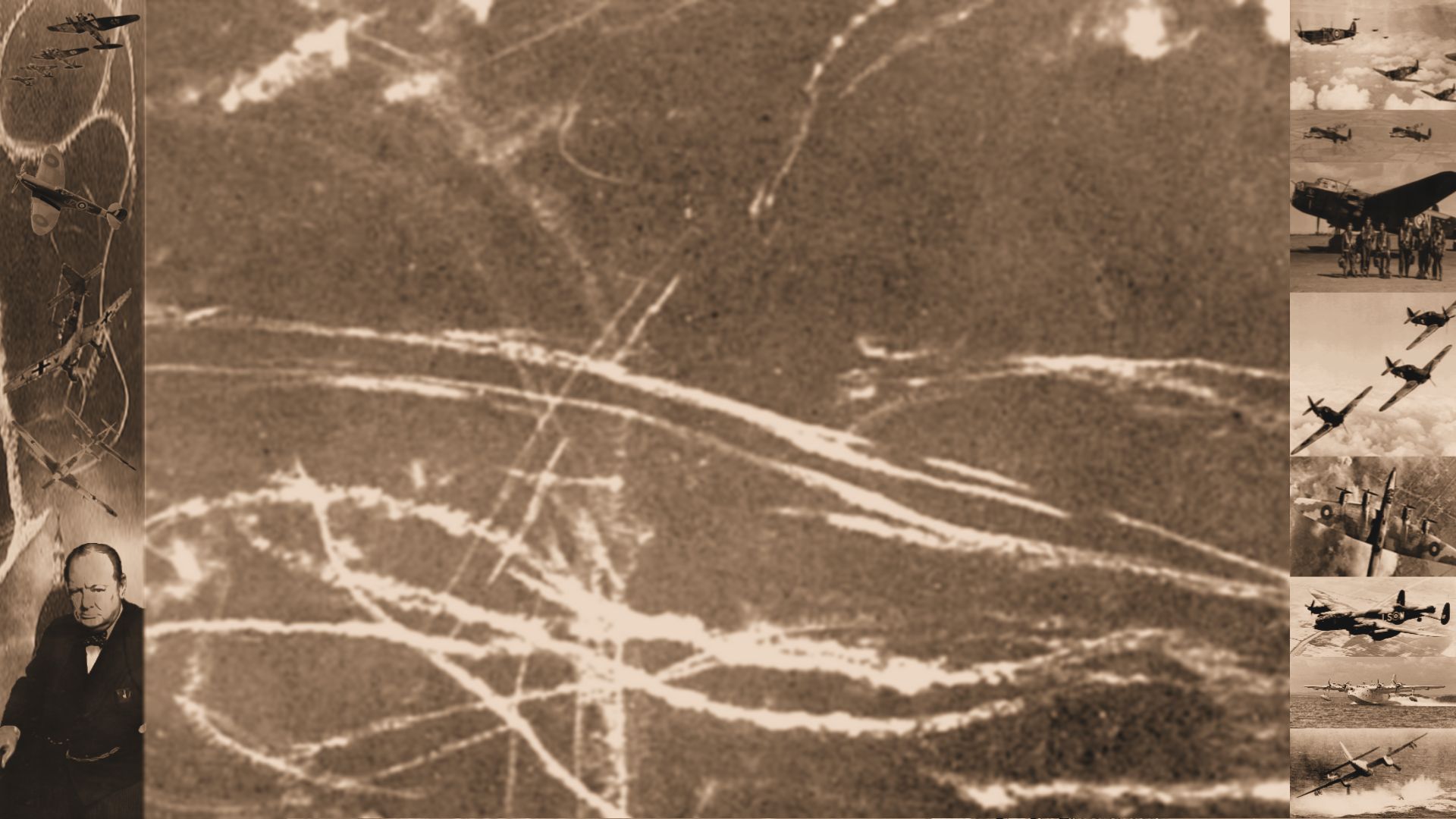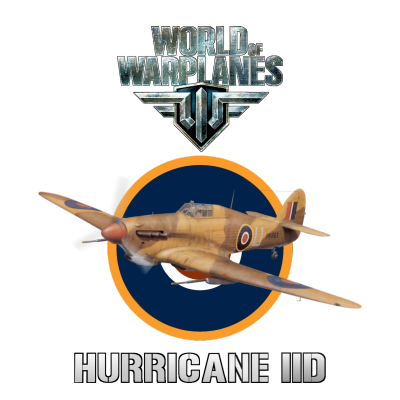The Hawker Hurricane was a British single-seat fighter aircraft that was designed and predominantly built by Hawker Aircraft Ltd for the Royal Air Force before and during World War 2. The Hawker Hurricane was the first operational R.A.F. aircraft capable of a top speed in excess of 300 m.p.h. The design of the Hurricane, directed by Sydney Camm, was the outcome of discussions with the Directorate of Technical Development towards the end of 1933, aimed at breaking the deadlocked biplane formula.
Development
The Hurricane was developed by Hawker in response to the Air Ministry specification F.36/34 (modified by F.5/34) for a fighter aircraft built around the new Rolls-Royce engine, then only known as the PV-12, later to become famous as the Merlin. At that time, RAF Fighter Command comprised just 13 squadrons, each equipped with either the Hawker Fury, Hawker Hart variant, or Bristol Bulldog all biplanes with fixed-pitch wooden propellers and non-retractable undercarriages. The design, started in early 1934, was the work of Sydney Camm. Sydney Camm's original plans submitted in response to the Air Ministry's specification were at first rejected. Camm tore up the proposal and set about designing a fighter as a Hawker private venture. With economy in mind, the Hurricane was designed using as many existing tools and jigs as possible (the aircraft was effectively a monoplane version of the successful Hawker Fury), and it was these factors that were major contributors to the aircraft's success. The Mk I was fitted with the 990 hp (take off) Rolls-Royce Merlin II, 12 cyl., liquid-cooled engine. It had a maximum speed of 330 mph (530 km/h) at 17,500 ft (5,333 m), with a ceiling of 36,000 ft (10,920 m) and a range of 460 mi. (740 km). It packed 8 Browning 0.303 machine guns in the wings, giving it a fair bit of destructive power. In 1939 it was fitted with metal wings, a three blade propellor and armour.
The Hurricane Mk.II used the 1280 hp (take off) Rolls-Royce Merlin XX 12 cyl., supercharged engine, giving it a speed of 334-342 mph depending on the version (550km/h), a ceiling of 36,475 ft (11,125m), and a range of 480 mi (772 km). The Mk IIB packed a mighty punch with twelve 0.303 machine guns and could carry two 250 or 500 lb (227kg) bombs, or alternatively 45 or 90 gallon drop tanks. The Mk IIC carried four 20 mm British-made Hispano cannons, two in each wing. The real bruiser in this series was the Mk IID carrying two 40 mm Vickers cannons and two 0.303 in. machine guns and extra armour for low level attacks on armoured vehicles. All of the extra weight reduced the speed and range of the aircraft.
The Mk.IV model (initially called the Mk.IIE) used a 'universal wing' making the arrangement of armament very flexible. Also, the Mk.IV was given the most powerful Merlin engine available, the 1298 hp models 21 or 22, 12 cyl. supercharged and liquid-cooled. The maximum speed of the aircraft dropped to 314 mph (502 km/h) due to the carrying of heavier armament and 350 lbs of extra armour. It had a range of 495 miles (790 km). The MkIV wings were capable of handling 1) two 0.303 in. machine guns and two 40 mm antitank cannons 2) eight Rocket Projectiles (25 lb armour piercing or 60 lb HE) and two 0.303 machine guns, 3) two 250 lb or two 500 lb bombs and two 0.303 machine guns. Other options were two long range disposable tanks. These aircraft were intended for ground attacks against armour, and were particularly effective in North Africa, Italy and Burma. Hurricanes II's continued on in the Far East in the later stages of the war against Japan. They fought primarily on in the Burma front fighting on to the end of the war.
Back to Top
In Action
France
While the opening months of the war were characterised by little air activity in general, there were sporadic engagements and aerial skirmishes between the two sides. On 30 October 1939 Hurricanes saw action over France. That day, Pilot Officer P. W. O. "Boy" Mould of 1 Squadron, flying Hurricane L1842, shot down a Dornier Do 17P from 2(F)/123. In May 1940, Nos. 3, 79 and 504 Squadrons reinforced the earlier units as Germany's Blitzkrieg gathered momentum. On 10 May, the first day of the Battle of France, Flight Lieutenant R. E. Lovett and Flying Officer "Fanny" Orton, of 73 Squadron, were the first R.A.F pilots to engage enemy aircraft in the campaign. On 12 May several Hurricanes units were committed to escort bombers. When the formation approached Maastricht, it was bounced by 16 Bf 109Es from 2./JG 27. Two Battles and two Hurricanes were shot down, two more Battles were brought down by flak and the fifth bomber had to crash-land. On 13 May 1940, a further 32 Hurricanes arrived. All ten requested Hurricane squadrons were then operating from French soil and felt the full force of the Nazi offensive. The following day, Hurricanes suffered heavy losses: 27 being shot down, 22 by Messerschmitts, with 15 pilots killed (another died some days later), including Squadron Leader J. B. Parnall (504 Squadron), and the Australian ace Flying Officer Les Clisby (1 Squadron). On the same day, 3 Squadron claimed 17 German aircraft shot down, 85 and 87 Squadrons together claimed four victories, while 607 Squadron claimed nine. During the following three days (15-17 May), no fewer than 51 Hurricanes were lost, in combat or in accidents. During the 11 days of fighting in France and over Dunkirk from 10 to 21 May, Hurricane pilots claimed 499 kills and 123 probables. Contemporary German records, examined postwar, attribute 299 Luftwaffe aircraft destroyed and 65 seriously damaged by RAF fighters. The last 66 Hurricanes of the 452 engaged during the Battle of France left France on 21 June; 178 were abandoned at several airfields, notably Merville, Abbeville, and Lille/Seclin.
Back to Top
Battle of Britain
A total of 1,715 Hurricanes flew with Fighter Command during the period of the Battle, far in excess of all other British fighters combined. It is estimated that its pilots were credited with four-fifths of all enemy aircraft destroyed in the period July-October 1940. Following the Battle of Britain, the Hurricane continued to give service, and through the Blitz of 1941, was the principal single-seat night fighter. On 8 August 1940, Hurricanes of No. 145 Squadron were recorded as having fired the first shots of the Battle of Britain. The highest scoring Hurricane squadron during the Battle of Britain was the No. 303 Polish Fighter Squadron. This squadron also had the distinction of having the highest ratio of enemy aircraft destroyed to own losses suffered.
Back to Top
North Africa and Malta
The Hurricane Mk II was hastily tropicalised following Italy's entry into the war in June 1940. These aircraft were initially ferried through France by air to No.80 Squadron in Egypt to replace Gladiators. The Hurricane claimed its first kill in the Mediterranean on 19th June 1940, when F/O P.G. Wykeham-Barnes reported shooting down two Fiat CR.42s. Hurricanes served with several British Commonwealth squadrons in the Desert Air Force. They suffered heavy losses over North Africa after the arrival of the Bf 109E and F-variants and were progressively replaced in the air superiority role from June 1941. However, fighter-bomber variants 'Hurribombers' retained an edge in the ground attack role, due to their impressive armament. A Hurricane Mk I undertook tropical trials in Sudan in mid 1939, and a number were hastily tropicalised following Italy's entry into the war in June 1940. These aircraft were initially ferried through France and Malta by air to 80 Squadron in Egypt, replacing Gladiator biplanes. In Malta, four Hurricanes joined the surviving Gladiators at the end of June, and together they faced attacks throughout July from the 200 enemy aircraft based in Sicily, with the loss of one Gladiator and one Hurricane. Further reinforcements arrived on 2 August in the form of 12 more Hurricanes and two Blackburn Skuas.
Back to Top
Soviet Union
The Hawker Hurricane was the first Allied Lend-Lease aircraft to be delivered to the Soviet Union with a total of 2,952 Hurricanes eventually delivered, becoming the most numerous British aircraft in Soviet service. Many Soviet pilots were disappointed by the Hawker fighter, regarding it as inferior to both German and Soviet aircraft.During 1941, Mk II Hurricanes played an important air defence role when the Soviet Union found itself under threat from the approaching German Army, who were advancing across a broad front stretching from Leningrad and Moscow to the oil fields in the south. Britain's decision to aid the Soviets meant sending supplies by sea to the far northern ports, and as the convoys needed to sail within range of enemy air attack from the Luftwaffe based in neighbouring Finland, it was decided to deliver a number of Hurricane Mk IIBs, flying with Nos. 81 and 134 Squadrons of No. 151 Wing RAF, to provide protection. Although Soviet pilots were not universally enthusiastic about the Hurricane, twice Hero of the Soviet Union Lt. Col. Boris Safonov "loved the Hurricane", and RAF Hurricane Mk IIB fighters operating from Soviet soil in defence of Murmansk, destroyed 15 Luftwaffe aircraft for only one loss in combat. However, in some Soviet war memoirs, the Hurricane has been described in very unflattering terms.
Back to Top
Far East
Following the outbreak of the war with Japan, 51 Hurricane Mk IIBs en route to Iraq were diverted to Singapore; 10 were in crates, the others partially disassembled, these and the 24 pilots (many of whom were veterans of the Battle of Britain), who had been transferred to the theatre, formed the nucleus of five squadrons. They arrived on 13 January 1942, by which time the Allied fighter squadrons in Singapore, flying Brewster F2A 'Buffalos', had been overwhelmed during the Malayan campaign. The fighters of the Imperial Japanese Army Air Force, especially the Nakajima Ki-43 'Oscar', had been underestimated in its capability, numbers and the strategy of its commanders. When a Japanese carrier task force under the command of Admiral Chuichi Nagumo made a sortie into the Indian Ocean in April 1942, RAF Hurricanes based on Ceylon saw action against Nagumo's forces during attacks on Colombo on 5 April 1942 and on Trincomalee harbour on 9 April 1942. The Japanese task force sent 91 B5Ns escorted by 41 A6M 'Zeros' against Trincomalee port and the nearby China Bay airfield. Sixteen Hurricanes opposed the raid, of which eight were lost with a further three damaged. They claimed eight Japanese aircraft destroyed with a further four probably destroyed and at least five damaged. Actual Japanese losses were three A6Ms and two B5Ns, with a further 10 B5Ns damaged.
Back to Top
Other Roles
Hurricanes were used on Catapult Aircraft Merchant 'ÇAM' ships as protection against long range German search planes like the Fw 200 'Condor'. Once launched and mission achieved, the Hurricane would ditch and the pilot would have to be rescued.
Along with the Supermarine Spitfire, the Hurricane epitomised the fight for freedom against the Luftwaffe during the Battle of Britain. However, the basics of the Hurricane would not allow for it to be developed much further like the Spitfire because of its original design based on the original Hawker Fury which was a biplane which wouldn't allow for bigger engines or heavier payloads to be carried. The next developments learnt from the Hurricane went into the Hawker Typhoon.
The last Hurricane ever built, of 14,533 was a Mk IIC version, originally known as "The Last of the Many" and owned by Hawker and is now flown by the Battle of Britain Memorial Flight.
Back to Top




